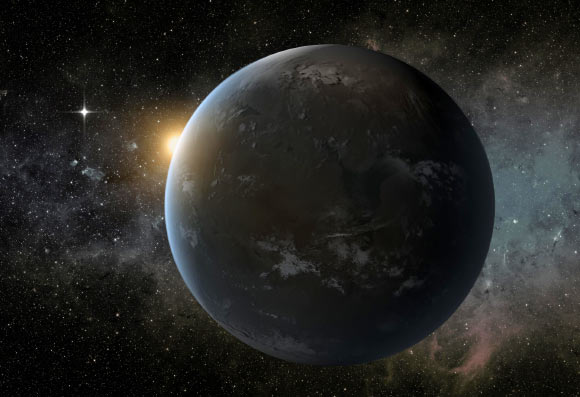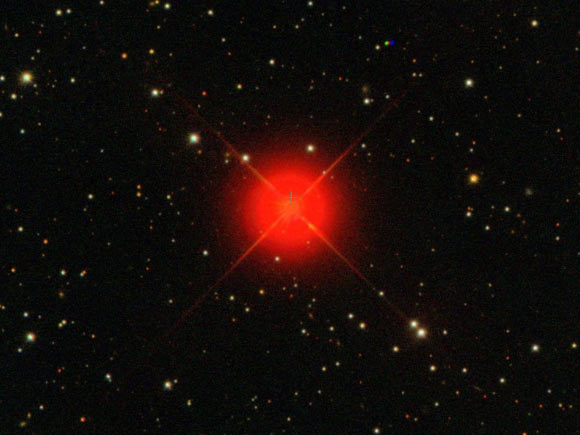A team of astronomers has spotted three exoplanets orbiting around the same star – Wolf 1061 – one of which is in the habitable zone.
Wolf 1061 is a red dwarf star located in the constellation Ophiuchus, only 14 light-years from Earth.
The three exoplanets discovered orbiting this star are between 1.3 and 5.2 times the size of our own, according to the team led by Dr Duncan Wright of the University of New South Wales.
“We have found strong Doppler signals in data for Wolf 1061 that indicate the presence of three planets: a 1.36 Earth minimum-mass planet with an orbital period P = 4.888 d (Wolf 1061b), a 4.25 Earth minimum-mass planet with orbital period P = 17.867 d (Wolf 1061c), and a probable 5.21 Earth minimum-mass planet with orbital period P = 67.274 d (Wolf 1061d),” the team wrote in a paper accepted for publication in the Astrophysical Journal Letters (arXiv.org preprint).
“All of the planets are of sufficiently low mass that they may be rocky in nature.”
The larger outer planet, Wolf 1061d, falls just outside the outer boundary of the habitable zone, while the smaller inner planet, Wolf 1061b, is too close to the star to be habitable.
“The middle planet, Wolf 1061c, sits within the Goldilocks zone where it might be possible for liquid water – and maybe even life – to exist,” said Dr Wright, who is the lead author of the paper.
He and his colleagues from the University of New South Wales made the discovery using data from the HARPS spectrograph on ESO’s 3.6-m telescope in La Silla, Chile.
Small terrestrial planets are now known to be abundant in our Milky Way Galaxy. However most of them discovered so far are hundreds or thousands of light years away.
An exception is Gliese 667Cc, a potentially habitable exoplanet located 22 light-years from Earth in the constellation Scorpius.
“The close proximity of the planets around Wolf 1061 means there is a good chance these planets may pass across the face of the star,” said co-author Dr Rob Wittenmyer.
“If they do, then it may be possible to study the atmospheres of these planets in future to see whether they would be conducive to life.”
_____
Wright D.J. et al. 2015. Three planets orbiting Wolf 1061. ApJL, accepted for publication; arXiv: 1512.05154









